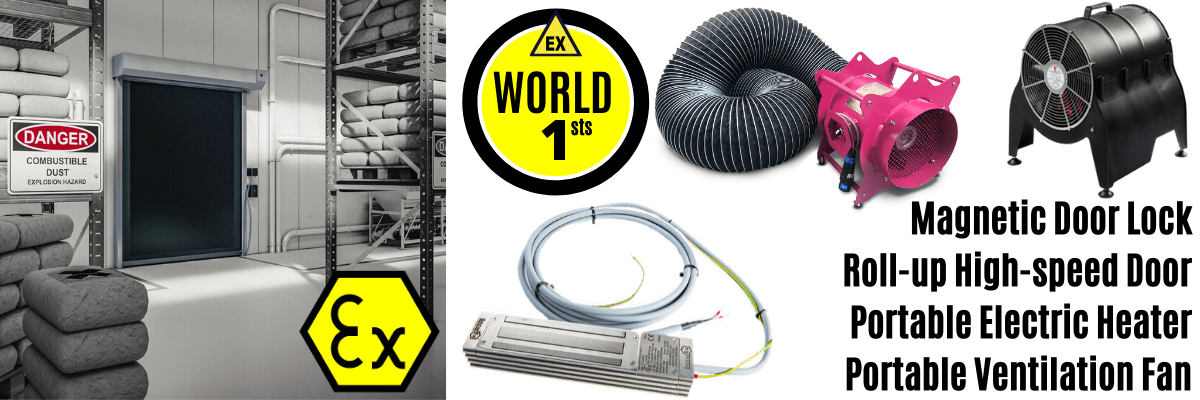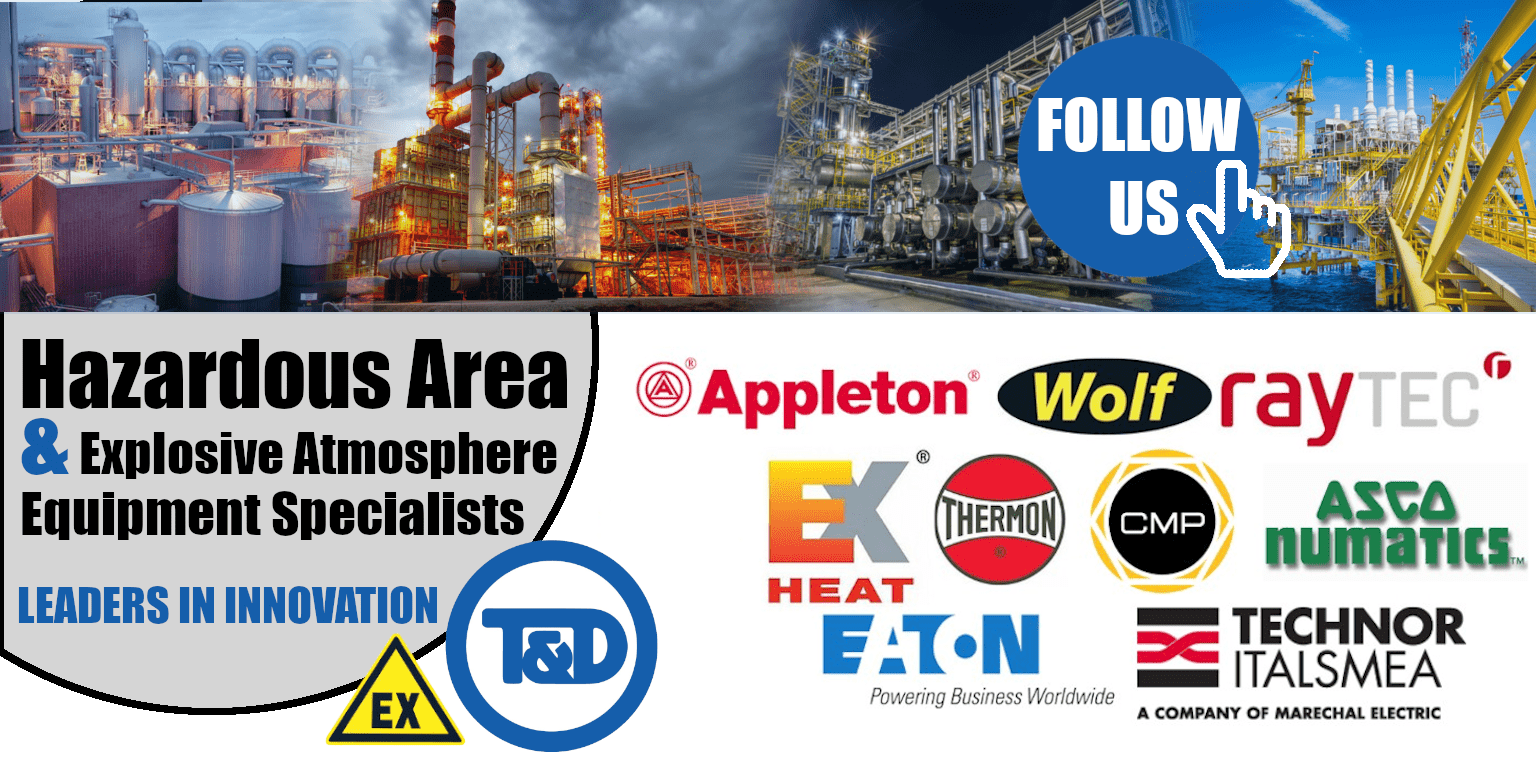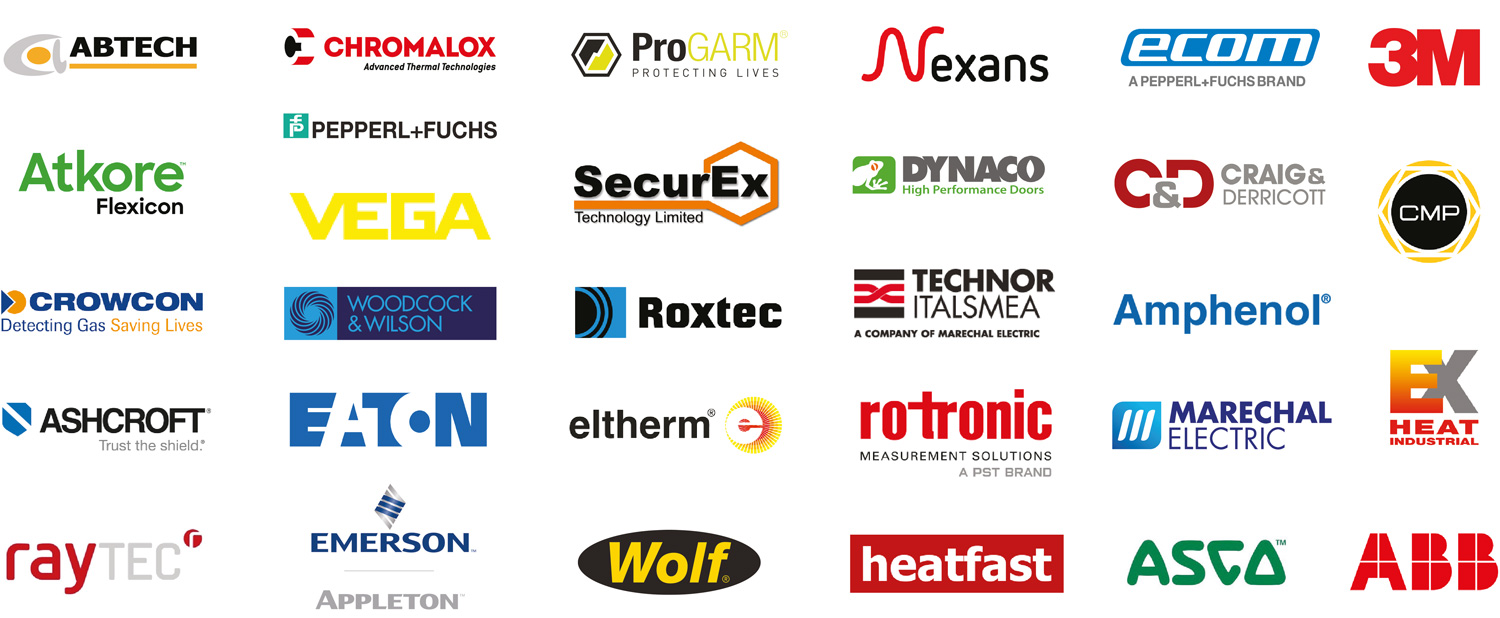Hydrogen Sulphide Gas Detection In Refining & Hazardous Area Industries
Published 24 Jan 2017
- By Chris Dodds : estimated reading time 15 minutes

Hydrogen Gas Detection – Crowcon portable and fixed gas detection solutions
Hydrogen sulphide (H2S) is a naturally occurring gas and can be found in many of the worlds crude oils. The gas is colourless and has a distinctive rotten egg odour at low levels however at high concentrations the gas will numb the human sense of smell which can be fatal.
Heavy oils such as crude oil, residual fuel and gas oil tend to have large concentrations of hydrogen sulphide and this can become a concern if the oils are to be stored over extended time periods.
This Blog looks at the dangers of hydrogen sulphide gas in the oil refining industry and the working areas that may have H2S present and the gas detection solutions available.
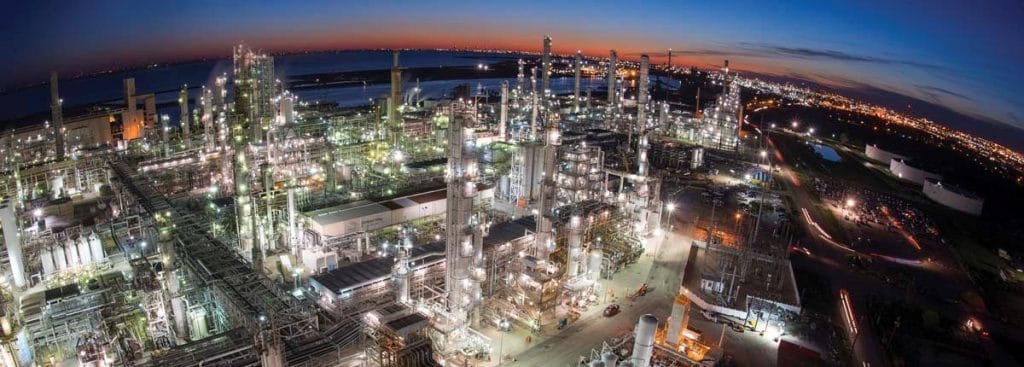
Image: Valero
What Are The Dangers Of H2S Gas?
Working in and around an oil refinery is naturally fraught with dangers and potentially hazardous areas. One of the most common and most underestimated problems faced by personnel is the presence of toxic gases and particularly hydrogen sulphide (H2S) gas.
H2S is a colourless gas and therefore invisible. The gas does have a distinctive rotten egg smell that can only be smelt at low concentrations as at higher and more dangerous levels, peoples sense of smell is significantly numbed and therefore without adequate fixed or portable gas detectors, they can succumb to the harmful effects of the gas.
Inhalation of hydrogen sulphide gas can lead to acute poisoning and death by suffocation occurs extremely fast. This Blog looks at where hydrogen sulphide gas can occur within refineries and which situations are particularly dangerous including hazardous areas.
H2S Gas Risks – Case Studies
- Death Caused After Fainting Due To H2S Gas – St. Charles Refinery, Norco, Louisiana, U.S. A contract worker was killed after being hospitalised following an incident of exposure to hydrogen sulphide gas. The surviving worker reported to police that he smelt hydrogen sulphide and began an immediate evacuation of the area. He lost consciousness and woke up half way down the ladder he was working on to see his colleague at ground level. The fatality also had a head trauma and later died in hospital however his loss of consciousness was related directly to the presence of hydrogen sulphide.
- Death Caused By H2S Gas Due To Unauthorised Maintenance – Workers at a sulphide refinery in Douglasville, Texas were busy relighting a waste boiler/heater and their task was to remove the sight glass and push the lighter into the valve and the burner. They discovered the glass was warped and replaced it without a safety permit. Meanwhile, Hydrogen Sulphide had leaked in to the area. One worker died on site from H2S poisoning where the other was hospitalised. There were also five other workers who showed symptoms of hydrogen sulphide poisoning.
- H2S Gas Causes Death Due To Disregard For Safety Rules – A fatal incident at a sour water stripper unit (SWSU) occurred when a field operator was collecting stripped sour water. The operator had gone to collect a sample and H2S gas had escaped from an open manhole. The worker lost consciousness and when eventually taken to hospital he was pronounced dead on arrival from gas poisoning. The levels of hydrogen sulphide gas were found to be above 40-50 ppm.
The above case studies highlight just how dangerous this gas can be and how essential it is to install effective, working gas detection systems.
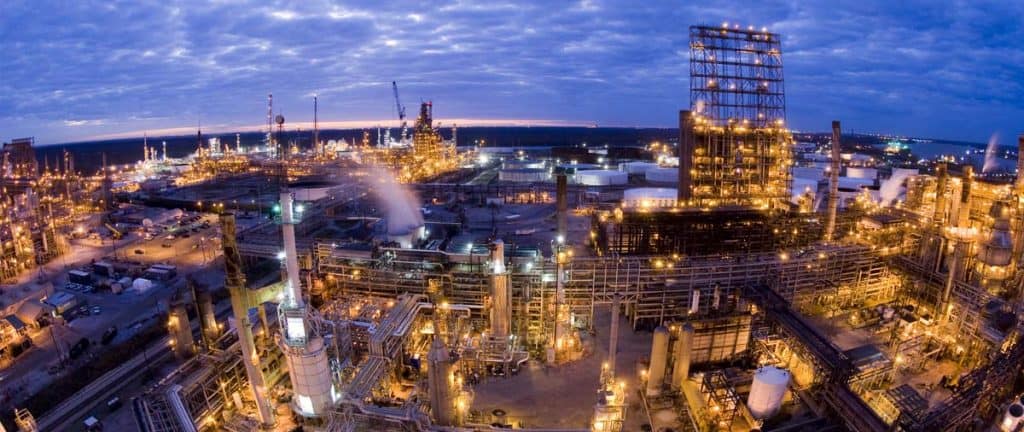
Valero St. Charles Refinery’s major process units were built or substantially reconstructed in the late 1990s, making the refinery one of the newest in the USA.
Characteristics Of Hydrogen Sulphide GAS

Hydrogen Sulphide – H2S Fact Card
Hydrogen sulphide gas is colourless and at certain low concentrations it has a distinctive rotten egg odour which is instantly recognisable and as a result of this smell, H2S is commonly know as sewer gas, digester gas or marsh gas.
However, at higher concentrations the gas numbs olfactory nerves and starting at a concentration of 100ppm. People are therefore no longer able to smell the gas – concentrations higher than 1000ppm can be instantly fatal.
in addition to the numbing of senses, H2S gas is heavier than air and therefore will often collect in low-lying areas and working sites near ground level. The gas will ignite itself at a temperature of 270°C and due to its highly inflammable properties an explosive atmosphere may occur when combined with air.
Strong reactions are possible that can trigger spontaneous combustion, explosions and detonations. In addition, H2S gas combined with air and humidity or moisture can corrode metals through the formation of sulphuric acid.
Where Can H2S gas Occur?
90% of hydrogen occurs naturally in the environment for example in hot sulphur springs and rock masses, however there are many areas within the oil and gas industry in which the presence and bi-production of H2S gas is a common occurrence.
The refining process commonly produces H2S as a bi-product however the gas also occurs at wellheads, oil and water tanks, pumps, piping systems and flare heads.
The most common locations for the presence of hydrogen sulphide within refineries are:
Storage – The crude oil is transported via either a pipeline or barge and is stored waiting to be processed. Hydrogen sulphide can be found in the head space of the tank and can corrode the tank reducing it’s product lifespan and as the tank fills the headspace concentration increases.
Distillation Columns – The crude oil is separated into various components in the distillation columns based on boiling points. The lightest components are used for gas with the heaviest elements used for asphalt. Hazards occur even though this is a closed system and the gas can be present in the heat exchanger, furnace, tower flash column, vacuum furnace and bottom exhcanger.
Hydrotreater & Hydrocracker – The hydrotreater is used to remove the sulphur and the hydro cracker breaks long hydrocarbon chains into shorter chains in order to create more efficient petroleum products. These actions are performed over a catalyst at high pressure and temperature with excess hydrogen. Hydrogen and sulphur combine and create H2S which is then sent to a recovery unit to create water and sulphur. H2S content in the feedstock must be monitored along with any leaks.
Blending – This is the physical mixing of various hydrocarbons in order to produce an end product with desired characteristics. H2S hazards can occur during sampling, inspection, maintenance and turnaround.
Solution: Safety considerations to undertake include fixed and portable gas detectors to be installed in and around maintenance equipment and on turnaround equipment.
Chemical Treatment Process – This process removes contaminants such as sulphur, nitrogen, oxygen, dissolved metals and salts. This in turn improves the odour, colour and oxidation stability. Hydrogen sulphide is commonly used during the recovery of sulphur and the hydrogen sulphur scrubbing process.
Gas hazards will occur during sampling, inspection, maintenance and turnaround.
Solution: Portable and fixed gas detector solutions should be used in and around maintenance and inspection equipment to ensure gas detection safety.
Power Generation – Oil refineries have many other operations including electric generation, steam generation, cooling towers, wastewater treatment and flaring systems. The potential for H2S hazards to occur are around cooling towers and contaminated wastewater. Caution should always be taken during sampling, inspection and maintenance.
Solution: Portable gas detectors should be used along with respirators and air purifiers.
Effects On The Human Body And Exposure Limits
Hydrogen sulphide gas is a so called ‘nitrogen’ gas and causes damage to the lungs, central nervous system and can also cause skin and mucous membrane irritation. Typical symptoms of poisoning include headaches, dizziness, fatigue, dry mouth, anxiety, confusion and lack of coordination.
Even in low concentrations and a low dose, H2S can be harmful if exposure is continuous over several hours or days. High concentrations can lead to unconsciousness almost instantly and a coma followed by death in just a few short breaths – these effects show exactly how dangerous this gas is and highlights the need for effective gas detection.

Solutions For Effective H2S Gas Detection
There are a number of gas detection solutions available from Thorne & Derrick including fixed, portable and transportable suitable for use in safe and hazardous areas. Each working area and gas hazard requires a different gas detection solution in order to provide the proper, effective protection for personnel and buildings.
Typically, smaller confined spaces require personal and portable gas detection solutions to be carried by workers.
Fixed Gas Detectors
Fixed point gas detectors provide constant, 24 hour gas monitoring 365 days a years which is important for the detection of random gas release. T&D are distributors for the Crowcon ranges of gas detection equipment. Our gas detection specialists can help you determine exactly the correct product for your requirements.
The ever-present safety protection provided by Crowcon fixed gas detectors means personnel working in areas such as distillation columns and chemical treatment plants are able to work freely – improving safety figures and increasing productivity.
Fixed gas detection systems are favoured in many oil and gas areas for their constant gas safety protection, monitoring of any gas leaks and providing both audible and visual warnings when there are no personnel on site.
Portable Gas Detectors
Portable gas detectors provide an excellent solution for the detection and monitoring of hydrogen sulphide among other hazardous gases. There are many benefits of using portable gas detection and differences compared to the use of fixed point detection systems.
The use of portable gas detection allows personnel the freedom to move between working areas safe in the knowledge that they are carrying their safety devices with them to detect and alert the presence of hazardous gases.
The difference between portable gas detectors and fixed is the length and continuity of detection – portable detection equipment must be tested, re-charged and have its own power supply whereas a fixed point detection system is hard wired and will provide constant, 24/7 detection however the flexibility and portability is compromised
Hazardous Area Gas Detection
Hazardous areas can occur when the presence of hazardous vapours, dusts or mists exist in a high enough volume. There are three categories of risk that must be identified reliably in order to protect human life and assets:
- Ex – The risk of explosion by flammable gases
- Ox – Oxygen; the risk of oxygen displacement or risk of increased flammability by oxygen enrichment
- Tox – Risk of poisoning by toxic gases
Without the use of auxiliary tools, people are often unable to recognise these dangers early enough to take action and prevent a serious incident or accident occurring.
Any equipment to be used in hazardous areas for gas monitoring purposes must fulfill the Essential Health And Safety Requirements (EHSR). In addition, as gas detection systems are products of safety technology, it is important not to misinterpret their role within oil refinery safety.
They are not simply a handful of detectors spread across and manufacturing plant, they are and should be considered a bespoke solution developed to fulfill the requirements of individual protection objectives.

Hazardous Area Gas Detectors Certified To International Classifications
All equipment to be used in zone 1 and zone 2 hazardous areas must be explosion proof and certified for use under the relevant local hazardous areas classifications such as ATEX and IECEx.
The 4 hazard levels of hydrogen sulphide gas
Hydrogen sulphide gas is extremely corrosive and causes metals to become brittle when exposed. All oil well drilling sites and areas within oil refineries must be classified according to areas of potential or actual exposure to H2S gas.
The four hazard levels are:
- No Hazard Condition – This is any well or area that will not penetrate a known hydrogen sulphide formation is a ‘no hazard’ zone. Specialist equipment is not required.
- API Condition I (Low Hazard) – These are working areas where concentrations of H2S are less than 10 PPM. Recommendations for working in these areas include hydrogen sulphide warning signs, keeping all safety equipment in adequate working order and storing equipment in accessible locations.
- API Condition II (Medium Hazard) – These are working conditions where atmospheric concentrations of H2S are greater than 10 PPM and less than 30 PPM. Recommendations for working in these areas include legible H2S warning signs, keeping a safe distance from dangerous working locations, pay attention to audible and visual alarms and store safety equipment in accessible locations.
- API Condition III (High Hazard) – Work locations with atmospheric concentrations of H2S higher than 30 PPM. Recommendations for working in these areas are two H2S detectors must be present (one should be a metered gas detector and one should be a pump type with detector tubes. There should also be an oxygen resuscitator, two usable exits at each location and signs 500 feet from each location warning of the presence of hydrogen sulphide.
Monitoring Hydrogen Sulphide (H2S)
To Meet New Exposure Standards
In any working area where there is the potential for exposure to hydrogen sulphide, a gas monitoring strategy is recommended to ensure exposure levels are kept below acceptable levels and that the appropriate action is taken if there is ever exposure above these levels.
In order to protect workers from exposure to harmful levels of hydrogen sulphide, the American Conference Of Governmental Industrial Hygienists (ACGIH) modified the Threshold Limit Value (TLV) for H2S in 2010.
From 1976 to 2009, the 8 hour time weighted average TLV (TLV-TWA) was 10 parts per million (PPM) and the 15 minute short-term exposure limit TLV (TLV-STEL) was 15 PPM. In 2010 a TLV-TWA of 1 PPM was adopted along with a TLV-STEL of 5 PPM for H2S.
ACGIH
The ACGIH is a globally recognised authority on the establishing of exposure limits for chemical agents including toxic gases, and the changes to the H2S limits followed a five year review period during which industry experts had the chance to express any concerns they had.
The best protection would be an electronic instrument that could measure and store both the 1 PPM TWA and 5 PPM STEL H2S levels and also provide and alarm when concentrations reached 5 PPM.
A portable gas detector is ideal for users who want to accurately and reliably measure H2S levels. It provides a noticeable visual, audible and vibration alarm notification to alert the user to dangers levels of hydrogen sulphide gas that is present.
The detector features an easy-to-use intuitive interface and also features data logging which records the entire history of the monitor for complete analytical and safety uses.
More Reading
- Methane CH4 Gas Detection – See How Crowcon Detects CH4 Gas Levels
- Gas Detection In The Food Processing Industry Using Portable Gas Detectors
ELECTRICAL & PROCESS INSTRUMENTATION EQUIPMENT
FOR EXPLOSIVE ATMOSPHERES
Thorne & Derrick are Specialist Distributors of Hazardous Area & Explosion Proof Equipment with IECEx & ATEX Certifications to the onshore and offshore oil, gas, petrochemicals and process industries.
Key Product Categories: Control Panels | Plugs & Sockets | Isolators | Enclosures & Junction Boxes | Lighting | Control Stations | Motor Starters | Heat Trace Cables & Systems | Gas Detection & Detectors | Fire Detection & Detectors | Heat Detectors | Electrical Heating & Heaters


Trace Heating | System Design & Supply
♦ LV Power Products | Junction Boxes & Enclosures ATEX | Plugs ATEX | Control Stations ATEX | Isolators ATEX

Thorne & Derrick | Detecting Flame | Heat | Gas
Experts in Equipment
for Explosive Atmospheres
FOLLOW US
Follow our Showcase Page on LinkedIn to receive hazardous area product innovations, industry news, whitepapers, videos, technical tips and training webinars for professionals involved in the explosive atmosphere industries.

